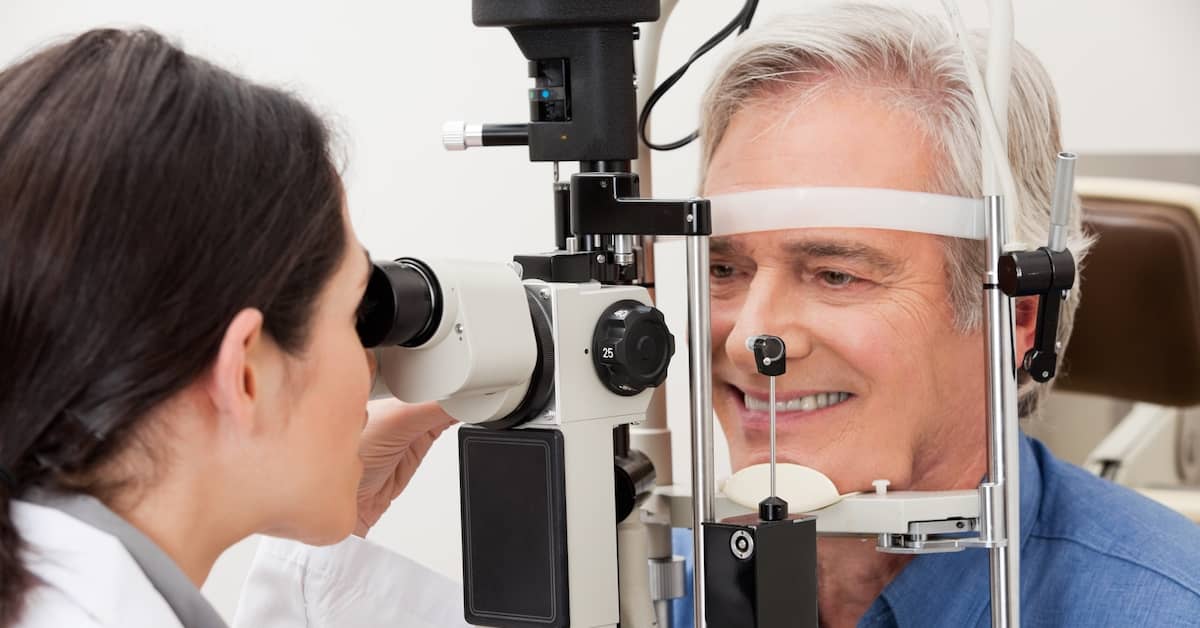
In glaucoma, abnormally high pressure develops in the eye and damages the optic nerve. It’s one of the top causes of blindness in the United States.2 But do you know the worst part about glaucoma?
It gives no warning signs. It comes over you so gradually, you may not even notice a change in your vision until it’s done permanent damage to one or both of your eyes.
Discover the cozy drink that helps prevent glaucoma from stealing some (or all) of your eyesight...
Early Signs of Glaucoma
This comforting drink is none other than hot tea.But first, it’s critical to know the early signs and symptoms of glaucoma. This is when damage to the optic nerve is beginning – but too slight for you to notice. Once it begins, you can’t recover lost vision.
Some of these signs include:3
- Patchy blind spots in the peripheral or central vision
- Tunnel vision
- Severe headache
- Eye pain
- Nausea and vomiting
- Blurred vision
- Halo effect around lights
- Eye redness
Hot Tea Slashes Glaucoma Risk By Three-Fourths
Merely sipping on hot tea daily can reduce your risk of this irreversible disease.A study conducted at the University of California and published in the British Journal of Ophthalmology in 2017 found drinking a cup of hot tea at least once a day substantially reduces the risk of developing glaucoma.4 These researchers looked at the 2005-06 National Health and Nutrition Examination Survey (NHANES) data of 1,678 men and women. The data included information about beverage consumption along with eye test results.
The findings show that those who indulged a tea-drinking habit on a daily basis had an astonishing 74 percent less chance of developing glaucomacompared to those who didn’t drink hot tea.
The researchers checked to see if drinking caffeinated and decaffeinated coffee, decaffeinated tea, iced tea and soft drinks had similar benefits against this disease. None of them slashed the glaucoma risk like hot tea. It’s got to be tea, and it’s got to have it’s full complement of caffeine.
And apparently it’s got to be hot. I suspect that’s because people usually make iced tea weaker than hot tea.
Tea contains anti-inflammatory, anticarcinogenic, antioxidant and neuroprotective properties associated with a lower risk of serious conditions, including heart disease, cancer and diabetes, the researchers say.
You’re probably familiar with the benefits of green tea, which contains priceless nutrients that are lost in the fermentation process that yields black tea. It’s interesting that, in this study, black tea was nonetheless found to have a powerful health effect.
Certain Groups Have a Higher Glaucoma Risk
Everyone is at risk for glaucoma because the older you get, the greater your chances of developing it. But certain groups have a higher chance than others.These groups include African Americans, people over 60 years old, those with family members who have glaucoma, Hispanics over the age of 60, people of Japanese descent, frequent users of asthma inhalers, those who received injuries to the eye at some time, and people with nearsightedness, hypertension and thick corneas.5 Obviously, that covers a lot of people.
Which Tea is The Healthiest?
All true tea, whether it’s white, green, black or oolong, comes from one plant – the Camellia sinensis. And they all contain disease-fighting compounds.The difference is in their processing.
The processing changes the nutritional profile and some of the health effects. But no matter which process, all tea leaves are dense with flavonoids (health-promoting chemicals).6 White tea is the least processed. It’s harvested before the plant’s leaves fully open and when the young buds are still covered by fine white hairs, giving it the name “white” tea.7 Its buds and leaves are much less oxidized (exposed to oxygen) than the other tea-leaf types and are not fermented after harvesting. This enables white tea to keep more of its antioxidant properties.
Green tea processing heats and dries the leaves quickly to prevent too much oxidation, which turns the leaves brown.
Black tea processing allows the leaves to fully oxidize before drying. This creates the deep brown to black color it’s known for.
Oolong tea goes through the same process as black tea, but it’s oxidized for only half the time.8 According to Jeffrey Blumberg, a professor of nutrition at Tufts University, “About one-third of the weight of a tea leaf is antioxidants, therefore, a serving of tea is like adding a serving of fruits or vegetables to your diet.”9[emphasis added]
It’s best to brew your tea fresh each time because storing brewed tea diminishes its properties. It’s also a good idea to keep your package of tea away from light and heat in an airtight container.
My Bipolar Caffeine Disorder
I’m sort of bipolar when it comes to tea and coffee. I’ve gone through many years of drinking only tea, never coffee, and lengthy periods of mainly drinking coffee. I love both. And both yield tremendous health benefits.Currently I’m in a coffee phase, but I still drink tea pretty frequently. There’s a whole world of delicious gourmet teas, and it’s tragic that so may people drink only tea made with orange pekoe tea bags. These teas are low-grade stuff and you’re missing a world of flavor – and fun – if they’re the only tea you drink.
The tea in tea bags is “broken” – meaning, essentially, powdered. High quality loose tea consists of entire leaves or large fragments of leaves, not the pulverized powder in bags.
I brew my tea loose and run the liquid through a strainer to get rid of the solids. Or you can put the tea in a “tea bell,” which is a strainer you immerse in the hot water. For my own unscientific reasons, I think it’s better to let the loose leaves circulate in the water.
Tea generally has much less caffeine than an equal amount of coffee, so it’s a nice afternoon or evening drink, if coffee tends to keep you awake.
- Public attitudes about eye and vision health.
- Glaucoma.
- Glaucoma.
- Frequency of a diagnosis of glaucoma in individuals who consume coffee, tea and/or soft drinks.
- Are you at risk for glaucoma?
- Tea’s health benefits seem promising.
- What is white tea?
- What is the difference between black tea, green tea, white tea, and oolong tea?
- Tea’s health benefits seem promising.
